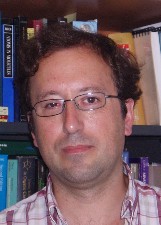Org. Synth. 2009, 86, 81
DOI: 10.15227/orgsyn.086.0081
STEREOSELECTIVE SYNTHESIS OF anti α-METHYL-β-METHOXY CARBOXYLIC COMPOUNDS
Submitted by Erik Gálvez, Pedro Romea, and Fèlix Urpí
1.
Checked by Vijaya Bhasker Gondi and Viresh H. Rawal.
1. Procedure
A. [(E)-3,3-dimethoxy-2-methyl-1-propenyl]benzene (1). An oven-dried 25-mL round-bottomed flask equipped with a magnetic stir bar is charged with (E)-2-methyl-3-phenylpropenal (6.0 mL, 43 mmol, 1.0 equiv) (Note 1) and Amberlyst 15 (50 mg) (Note 2). The flask is fitted with a rubber septum, flushed with nitrogen, cooled in an ice-water bath, and charged with trimethyl orthoformate (5.8 mL, 53 mmol, 1.2 equiv) (Note 3) and dry methanol (1.0 mL, 25 mmol, 0.56 equiv) (Note 4). The reaction mixture is stirred at room temperature for 36 h. The resin is removed by filtration through a cotton plug, and the volatiles are removed using a rotary evaporator (Note 5). The resultant oil is purified by short path vacuum distillation. The main fraction is collected at 120-130 °C (2.7 mmHg) and provides 6.48 g (78% yield) of the desired [(E)-3,3-dimethoxy-2-methyl-1-propenyl]benzene (1) (Notes 6, 7, 8).
B. (4S)-N-[(2R,3S,4E)-2,4-Dimethyl-3-methoxy-5-phenyl-4-pentenoyl]-4-isopropyl-1,3-thiazolidine-2-thione (2). An oven-dried 250-mL round-bottomed flask equipped with a magnetic stir bar is charged with (S)-4-isopropyl-N-propanoyl-1,3-thiazolidine-2-thione (2.20 g, 10.1 mmol, 1.0 equiv) (Note 9). The flask is fitted with a rubber septum, flushed with nitrogen, and charged with anhydrous CH2Cl2 (80 mL) (Note 10). The stirred solution is cooled in an ice-water bath, and neat TiCl4 (1.2 mL, 11 mmol, 1.1 equiv) (Note 11) is added dropwise by syringe over 1 min, which causes the formation of a yellow solid. The resulting suspension is stirred for 5 min, cooled with a liquid nitrogen-ethyl acetate bath (-83 °C), and a solution of dry diisopropylethylamine (1.83 mL, 11.0 mmol, 1.08 equiv) (Note 12) in CH2Cl2 (5 mL) is added dropwise via canula over 5 min, which produces a deep red homogeneous solution. An additional 5 mL of CH2Cl2 are used to transfer the last traces of diisopropylethylamine to the reaction flask. The reaction mixture is stirred in the liquid nitrogen-ethyl acetate bath for 30 min, then transferred to a cryocool (or acetone-dry ice bath) (bath temperature -50 °C to -55 °C) for 2 h. The reaction mixture is cooled again in a liquid nitrogen-ethyl acetate bath, and BF3·OEt2 (1.4 mL, 11 mmol, 1.1 equiv) (Note 13) is added dropwise by syringe over 1 min. After 5 min, a cooled (liquid nitrogen-ethyl acetate bath) solution of [(E)-3,3-dimethoxy-2-methyl-1-propenyl]benzene (1) (2.11 g, 10.9 mmol, 1.08 equiv) in CH2Cl2 (5 mL) is added dropwise via cannula over 5 min. An additional 5 mL of CH2Cl2 are used to transfer the last traces of 1 to the reaction flask. After stirring for 2 h in the liquid nitrogen-ethyl acetate bath, the reaction mixture is quenched with a saturated solution of NH4Cl (80 mL). The mixture is allowed to warm to room temperature, then transferred to a 250-mL separatory funnel. The aqueous layer is separated and extracted with CH2Cl2 (3 × 50 mL). The combined organic layers are dried (MgSO4), filtered through a cotton plug under water aspirator pressure and concentrated using a rotary evaporator to afford a bright yellow oil (Note 5), a 95:5 ratio of diastereomers (Note 14). The crude product is dissolved in 5 mL of CH2Cl2 and loaded on a flash chromatography column of deactivated silica gel (6.5-cm diameter glass column and ca 450 g of silica) (Note 15). The column is eluted using a gradient solvent system of hexanes-CH2Cl2, 4:1 to 3:1 to 2:1. The fractions containing the desired product are combined and concentrated by rotary evaporator to afford 3.42 g (9.06 mmol, 89% yield) of 2 as a bright yellow oil (Notes 16, 17, 18).
C. (2R,3S,4E)-N,3-Dimethoxy-N,2,4-trimethyl-5-phenyl-4-pentenamide (3). An oven-dried 25-mL round-bottomed flask equipped with a magnetic stir bar is charged with (4S)-N-[(2R,3S,4E)-2,4-dimethyl-3-methoxy-5-phenyl-4-pentenoyl]-4-isopropyl-1,3-thiazolidine-2-thione (2) (1.85 g, 4.89 mmol, 1.0 equiv). The flask is fitted with a rubber septum, flushed with nitrogen, and charged with anhydrous CH2Cl2 (10 mL, Note 10). The septum is temporarily removed and N,O-dimethylhydroxylamine hydrochloride (733 mg, 7.50 mmol, 1.53 equiv) (Note 19) and 4-dimethylaminopyridine (610 mg, 5.0 mmol, 1.02 equiv) (Note 20) are quickly added. The septum is replaced, the flask is flushed again with nitrogen, and dry triethylamine (0.75 mL, 5.0 mmol, 1.0 equiv) (Note 21) is added by syringe. The resulting mixture is stirred at room temperature for 15 h, over which period the initial deep yellow solution gradually fades to become almost colorless. The mixture is diluted with CH2Cl2 (35 mL), transferred to a 100-mL separatory funnel, and washed successively with 10% citric acid (3 × 30 mL), 1 M NaOH (4 × 30 mL) (Note 22) and brine (30 mL). The organic layer is dried (MgSO4), filtered through a cotton plug under water aspirator pressure, and concentrated with a rotary evaporator to afford a yellowish oil (Note 5). The oily residue is dissolved in 2.5 mL of CH2Cl2 and charged on a column (4.1-cm diameter) of silica gel (ca 50 g) and eluted with 3:2 hexanes/EtOAc. The desired product is obtained in fractions 10-25 (ca 20 mL/fraction), which are concentrated by rotary evaporator (Note 5) to deliver 1.15 g (4.14 mmol, 83% yield) of (2R,3S,4E)-N,3-dimethoxy-N,2,4-trimethyl-5-phenyl-4-pentenamide (3) as a viscous colorless oil that solidifies upon standing in the refrigerator (Note 23). To recover the chiral auxiliary, the basic aqueous layer is treated with 2 M aqueous HCl (60 mL), and the resultant mixture is transferred to a 250-mL separatory funnel and extracted with CH2Cl2 (3 × 50 mL). The combined organic layers are dried (MgSO4), filtered through a cotton plug under water aspirator pressure, and concentrated with a rotary evaporator (Note 5) to afford the thiazolidine auxiliary (638 mg, 81%) as a yellowish solid (mp 67-68 °C) that can be reused.
2. Notes
1.
(E)-2-Methyl-3-phenylpropenal was purchased from Aldrich Chemical Company, Inc., and used as supplied.
2.
Amberlyst 15 was purchased from Aldrich Chemical Company, Inc., and used as supplied.
3.
Trimethyl orthoformate was purchased from Aldrich Chemical Company, Inc., and used as supplied.
4.
Methanol was purchased from Aldrich Chemical Company, Inc., and distilled over magnesium.
5.
Rotary evaporation was performed at 10 mmHg (vacuum pump) with the water bath temperature at 25 °C.
6.
By HNMR analysis, the crude product is an 18:1 mixture of
E:Z diastereomers. After distillation, a 10:1 ratio of
E:Z diastereomers is present. Fractional distillation using a Vigreux column gives the product in higher
E/
Z ratio (>20:1) but in lower yield (38-43%). However, similar yield and dr were obtained when the second step was performed with acetals of 10:1 or 20:1 dr.
7.
The submitters reported a lower bp: 75-80 °C (2.5 mmHg).
8.
The physical properties and spectral data for the major diastereomer (
1) are as follows:
1H NMR
pdf (500 MHz, CDCl
3) δ: 1.89 (d,
J = 1.2 Hz, 3 H), 3.38 (s, 6 H), 4.65 (d,
J = 1.2 Hz, 1 H), 6.63 (br s, 1 H), 7.24-7.36 (m, 5 H);
13C NMR
pdf (75.4 MHz, CDCl
3) δ: 13.0, 53.6, 107.7, 126.8, 128.1, 128.5, 129.1, 134.4, 137.0; IR (film) cm
-1: 2987, 2932, 2827, 1601, 1445, 1347, 1196, 1073; HRMS calcd for C
12H
16O
2Na (M
++Na): 215.1043, found 215.1041. Anal. calcd for C
12H
16O
2: C, 74.97; H, 8.39; O, 16.64. Found: C, 75.22; H, 8.42; O, 16.58.
9.
The thiazolidine thione was prepared by the method described in the accompanying procedure.
10.
Dichloromethane was freshly distilled over calcium hydride. Checkers used the dichloromethane from a solvent purification system (activated alumina column).
11.
TiCl4 (reagent plus, 99.9%) was purchased from Aldrich Chemical Company, Inc., and used as supplied.
12.
Diisopropylethylamine was purchased from Aldrich Chemical Company, Inc., and freshly distilled over calcium hydride or KOH (checkers).
13.
BF3·OEt2 (purified, redistilled grade) was purchased from Aldrich Chemical Company, Inc., and used as supplied.
14.
The checkers analyzed the crude product by
1H NMR to determine the ratio of diastereomers. The submitters observed a 96:4 ratio of diastereomers by HPLC. The following HPLC conditions were used by the submitters. Detector: 254 nm; column: Tracer (250 × 4 mm) Spherisorb W Silica 5 μm; eluent: 97:3 hexanes/EtOAc; flow rate: 0.9 mL min
-1; retention times:
tR (major diastereomer) = 14.3 min;
tR (minor diastereomer) = 19.1 min.
15.
The column is wet-loaded with flash grade silica gel (40-63 μm) using 4:1 hexanes-CH
2Cl
2 solvent mixture containing 3% Et
3N by volume. Further solvent mixtures used for running the column are also treated with 3% Et
3N. The submitters followed a different method for loading and running the column: Deactivated silica is prepared by addition of
CH2Cl2 (300 mL) to
SiO2 (200 g) kept in a 1-L round-bottomed flask. After shaking carefully, dry
triethylamine (5 mL) was added followed by additional
CH2Cl2 (200 mL). The mixture is carefully shaken and the solvent is removed with a rotary evaporator (
Attention: a cotton plug is placed at the neck of the flask to keep silica gel from blowing into the evaporator).
16.
The product should be kept in the refrigerator under a nitrogen atmosphere to minimize decomposition.
17.
The physical properties and spectral data for
2: [α]
+189.7 (
c 1.05, CHCl
3), [α]
D +178.7 (
c 1.2, CHCl
3, submitters); TLC R
f 0.83 (CH
2Cl
2); HPLC (97:3 hexanes/EtOAc)
tR = 14.3 min (submitters);
1H NMR
pdf (400 MHz, CDCl
3) δ: 1.01 (d,
J = 6.8 Hz, 3 H), 1.03 (d,
J = 6.6 Hz, 3 H), 1.08 (d,
J = 6.6 Hz, 3 H), 1.85 (br s, 3 H), 2.32-2.40 (m, 1 H), 2.99 (dd,
J = 11.4, 2.1 Hz, 1 H), 3.16 (s, 3 H), 3.45 (dd,
J = 11.4, 8.7 Hz, 1 H), 3.92 (d,
J = 9.9 Hz, 1 H), 5.21 (dq,
J = 9.9, 7.0 Hz, 1 H), 5.34 (ddd,
J = 8.7, 5.4, 2.1 Hz, 1 H), 6.52 (br s, 1 H), 7.35−7.24 (m, 5 H);
13C NMR
pdf (125 MHz, CDCl
3) δ: 12.1, 14.3, 16.8, 19.0, 28.7, 30.3, 41.3, 55.9, 71.9, 91.8, 126.7, 128.1, 129.0, 131.1, 135.0, 137.0, 177.8, 202.6; IR (film) cm
-1: 2940, 1690, 1440, 1365, 1240, 1150; HRMS calcd for C
20H
27NO
2S
2Na (M
++Na): 400.1375, found: 400.1366. Anal. calcd for C
20H
27NO
2S
2: C, 63.62; H, 7.21; N, 3.71; S, 16.99. Found: C, 63.42; H, 6.97; N, 3.69; S, 17.00.
18.
Checkers found that later fractions contain the starting aldehyde, (
E)-2-methyl-3-phenylpropenal, and a minor diastereomer of
2. The R
f for the aldehyde is 0.77 (CH
2Cl
2). Properties of the minor diastereomer:
Rf = 0.71 (CH
2Cl
2);
1H NMR (500 MHz, CDCl
3) δ: 0.84 (d,
J = 6.9 Hz, 3 H, CH
3CC
H3), 0.89 (d,
J = 6.8 Hz, 3 H, COCHC
H3), 1.28 (d,
J = 6.8 Hz, 3 H, C
H3CCH
3), 1.87 (br s, 3 H, (C
H3)C=CHPh), 2.12-2.16 (m, 1 H, C
H(CH
3)
2), 2.90 (d,
J = 11.5 Hz, 1 H, SCH
aC
Hb), 3.28 (s, 3 H, OC
H3), 3.42 (m, 1 H, SC
HaH
b), 4.07 (d,
J = 8.1 Hz, 1 H, C
HOCH
3), 5.28 (m, 2 H, NC
H and COC
HCH
3), 6.51 (br s, 1 H, PhC
H=C), 7.20-7.33 (m, 5H, Ar
H). In one run, the checkers also isolated a very small amount (<1%) of another diastereomer, tentatively assigned to be the product of aldol reaction with the
Z isomeric acetal.
19.
N,O-Dimethylhydroxylamine hydrochloride (98%) was purchased from Aldrich Chemical Company, Inc., and kept overnight under vacuum before use.
20.
4-Dimethylaminopyridine (99%) was purchased from Aldrich Chemical Company, Inc., and used as supplied.
21.
Triethylamine was purchased from Aldrich Chemical Company, Inc., and freshly distilled over calcium hydride.
22.
The basic aqueous solution contains the deprotonated chiral auxiliary.
23.
The physical properties and spectral data for
3 are as follows: [α]
+58.0 (
c 1.18, CHCl
3); TLC R
f 0.40 (hexanes/EtOAc, 3:2); HPLC (85:15 hexanes/EtOAc)
tR = 23.4 min; chiral HPLC (97:3 hexanes/
i-PrOH)
tR = 8.2 min; mp 40-42 °C;
1H NMR
pdf (400 MHz, CDCl
3) δ: 0.99 (d,
J = 7.0 Hz, 3 H), 1.83 (br s, 3 H), 3.20 (s, 3 H), 3.25 (s, 3 H), 3.23-3.25 (m, 1 H), 3.76 (s, 3 H), 3.86 (d,
J = 10.2 Hz, 1 H), 6.54 (br s, 1 H), 7.23-7.37 (m, 5 H);
13C NMR
pdf (125 MHz, CDCl
3) δ: 11.9, 14.3, 32.1, 37.5, 56.2, 61.4, 89.9, 126.7, 128.1, 129.0, 131.0, 135.0, 137.1, 175.0; IR (film) cm
-1: 2976, 2935, 2819, 1660, 1448, 1418, 1386, 1178; HRMS calcd. for C
16H
23NNaO
3 [M+Na]
+ 300.1576, found 300.1563. Anal. calcd for C
16H
23NO
3: C, 69.29; H, 8.36; N, 5.05; Found: C, 68.87; H, 8.13; N, 5.11.
Handling and Disposal of Hazardous Chemicals
The procedures in this article are intended for use only by persons with prior training in experimental organic chemistry. All hazardous materials should be handled using the standard procedures for work with chemicals described in references such as "Prudent Practices in the Laboratory" (The National Academies Press, Washington, D.C., 2011 www.nap.edu). All chemical waste should be disposed of in accordance with local regulations. For general guidelines for the management of chemical waste, see Chapter 8 of Prudent Practices.
These procedures must be conducted at one's own risk. Organic Syntheses, Inc., its Editors, and its Board of Directors do not warrant or guarantee the safety of individuals using these procedures and hereby disclaim any liability for any injuries or damages claimed to have resulted from or related in any way to the procedures herein.
3. Discussion
The reported experimental procedure can be also applied to other dimethyl acetals from aromatic and α,β-unsaturated aldehydes (see entries 1-6 in Table 1), whereas less reactive substrates, such as acetals from deactivated aromatic or aliphatic aldehydes, require a stronger Lewis acid (SnCl
4) and higher temperatures to obtain similar yields and diastereomeric ratios (see entries 7-10 in Table 1). Thus, the addition of the titanium enolate from (
S)-4-isopropyl-
N-propanoyl-1,3-thiazolidine-2-thione to a wide range of dimethyl acetals in the presence of a Lewis acid (BF
3·OEt
2 or SnCl
4) constitutes an efficient one-step entry to the stereoselective synthesis of
anti β-methoxy-α-methyl carboxylic adducts.
2Table 1. Stereoselective synthesis of anti β-methoxy-α-methyl carboxylic adducts
As shown by the preparation of the Weinreb amide
3, one of the most appealing advantages of the 1,3-thiazolidine-2-thione auxiliaries is that they are removed under very mild conditions.
3,4 Indeed, the above mentioned adducts are easily transformed into a large number of enantiopure 1,3-dioxygenated compounds with high interest in organic synthesis (Scheme 1).
Further studies have established that this methodology can be generalized to other substrates. Dibenzyl acetals afford in high yields and diastereomeric ratios the corresponding
anti adducts, which may be considered as protected
anti aldol structures (Scheme 2). Importantly,
matched pairs in double asymmetric reactions with chiral dibenzyl acetals deliver the Felkin adduct as the sole diastereomer.
5Scheme 2
Finally, this methodology has been applied to titanium enolates from (
S)-
N-acetyl-4-isopropyl-1,3-thiazolidine-2-thione (Scheme 3). Compared to the results summarized in Table 1, the diastereoselectivity of this process is slightly lower, but it achieves sufficiently good results to be used in asymmetric synthesis,
6 and has been successfully applied to the stereoselective synthesis of the C9-C21 fragment of debromoaplysiatoxin.
7Scheme 3
Appendix
Chemical Abstracts Nomenclature (Collective Index Number);
(Registry Number)
(E)-2-Methyl-3-phenylpropenal; (15174-47-7)
Trimethyl orthoformate; (149-73-5)
(E)-3,3-Dimethoxy-2-methyl-1-propenyl]benzene: Benzene, [(1E)-3,3-dimethoxy-2-methyl-1-propen-1-yl]-: (137032-32-7)
(S)-4-(1-Methylethyl)-3-(1-oxopropyl)-2-thiazolidinethione; (102831-92-5)
Diisopropylethylamine: 2-Propanamine, N-ethyl-N-(1-methylethyl)-; (7087-68-5)
Titanium tetrachloride; (7550-45-0)
Boron trifluoride etherate: BF3·OEt2 (109-63-7)
(4S)-3-[(2R,3S,4E)-3-Methoxy-2,4-dimethyl-1-oxo-5-phenyl-4-pentenyl]-4-(1-methylethyl)-2-thiazolidinethione; (332902-42-8)
N,O-Dimethylhydroxylamine hydrochloride: Methanamine, N-methoxy-, hydrochloride; (6638-79-5)
4-Dimethylaminopyridine: 4-Pyridinamine, N,N-dimethyl-; (1122-58-3)
Triethylamine: thanamine, N,N-diethyl-; (121-44-8)
 |
Pedro Romea completed his B.Sc. in Chemistry in 1984 at the University of Barcelona. That year he joined the group of Professor Jaume Vilarrasa, at the University of Barcelona, receiving his Masters Degree in 1985, and he followed Ph.D. studies in the same group from 1987 to 1991. Then, he joined the group of Professor Ian Paterson at the University of Cambridge (UK), where he participated in the total synthesis of oleandolide. Back to the University of Barcelona, he became Associate Professor in 1993. His research interests have focused on the development of new synthetic methodologies and their application to the stereoselective synthesis of naturally occurring molecular structures.
|
 |
Erik Gálvez was born in Barcelona, Spain, in 1982. He received his B.Sc. in Chemistry in 2005 at the Universitat de Barcelona and joined the group of Pedro Romea and Fèlix Urpí. In 2006 he received his Masters Degree and is now pursuing the Ph.D. in the same group. His research concerns asymmetric methodologies involving cross-coupling reactions using 1,3-thiazolidine-2-thiones as source of chirality.
|
 |
Fèlix Urpí received his B.Sc. in Chemistry in 1980 at the University of Barcelona. In 1981, he joined the group of Professor Jaume Vilarrasa, at the University of Barcelona, receiving his Masters Degree in 1981 and Ph.D. in 1988, where he was an Assistant Professor. He then worked as a NATO postdoctoral research associate in titanium enolate chemistry with Professor David A. Evans, at Harvard University in Cambridge, MA. He moved back to the University of Barcelona and he became Associate Professor in 1991. His research interests have focused on the development of new synthetic methodologies and their application to the stereoselective synthesis of naturally occurring molecular structures.
|
 |
Vijaya Bhasker Gondi was born in Amrabad, India in 1979. He received his B.Sc. and M.Sc. in Industrial Chemistry from Indian Institute of Technology, Kharagpur, in 2002, and in the same year went to the University of Chicago for graduate studies. He completed his Ph.D. in chemistry with Prof. Viresh Rawal in 2008, working on the asymmetric catalysis of carbon-carbon bond forming reactions through hydrogen bonding. Soon thereafter, he began his postdoctoral studies at The Scripps Research Institute, La Jolla, with Prof. K. C. Nicolaou.
|
Copyright © 1921-, Organic Syntheses, Inc. All Rights Reserved